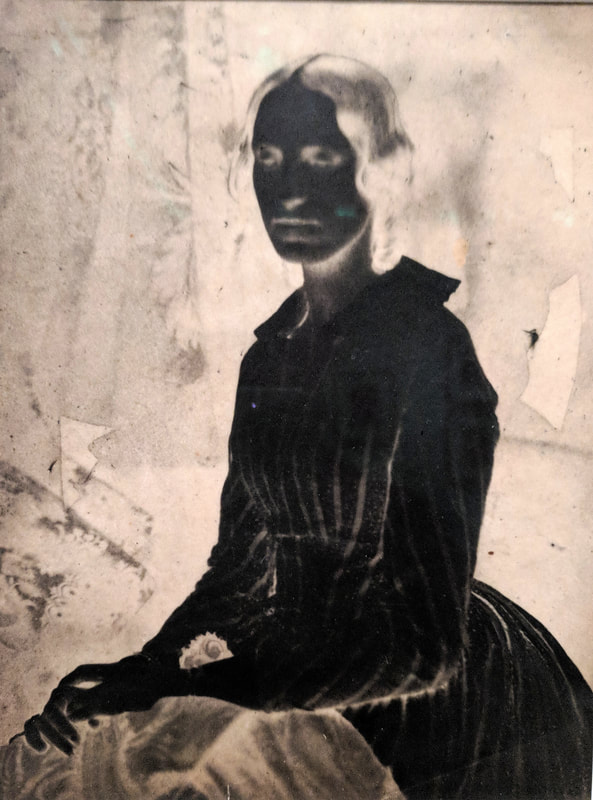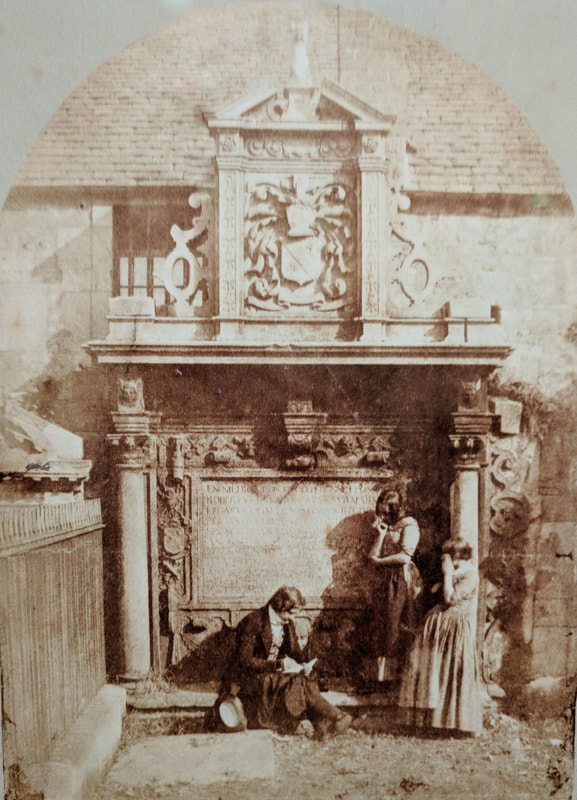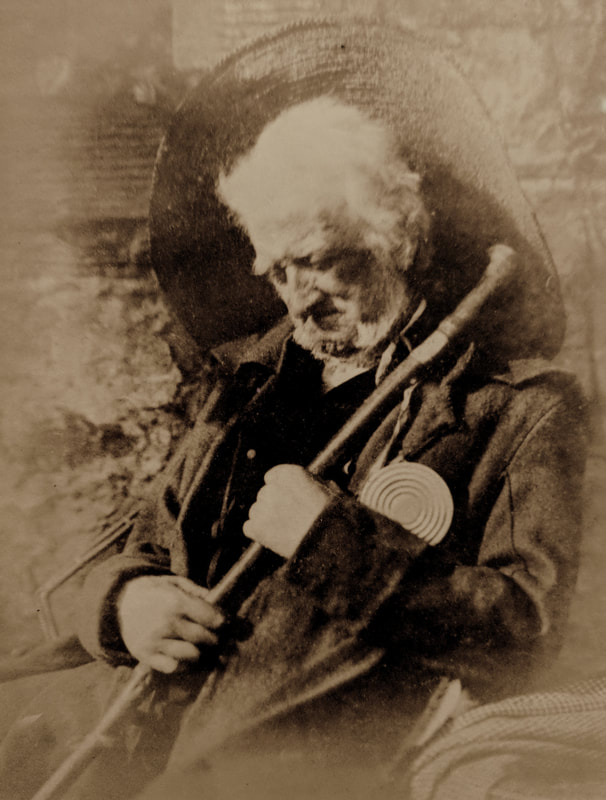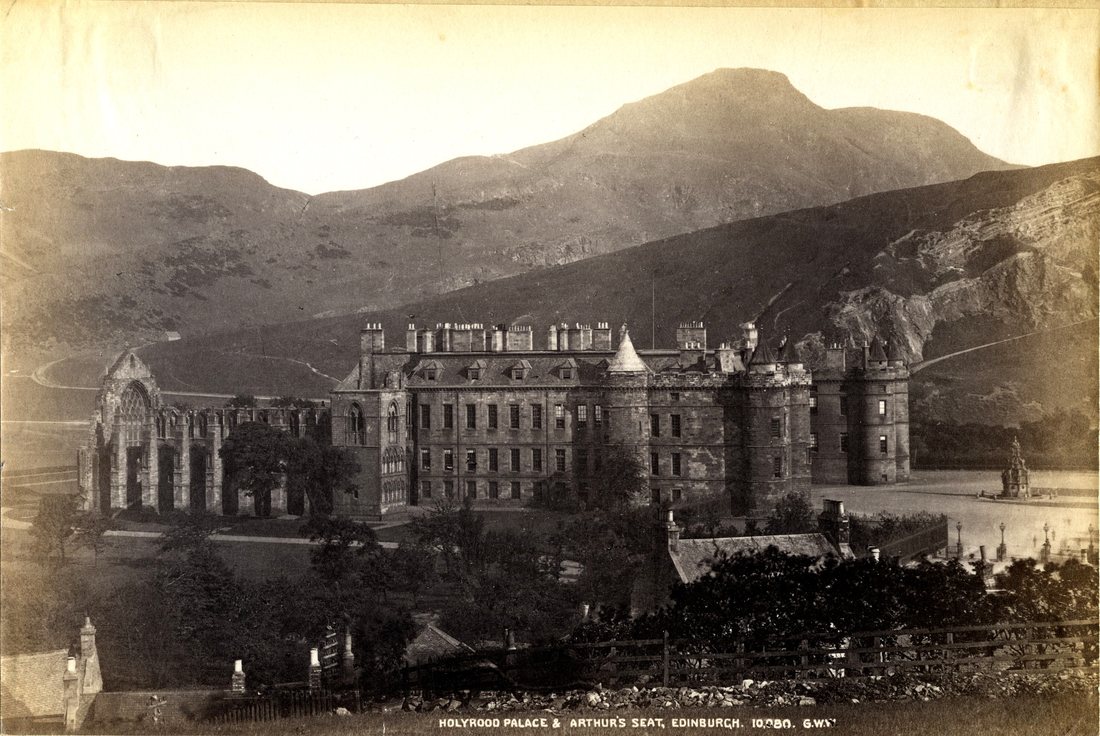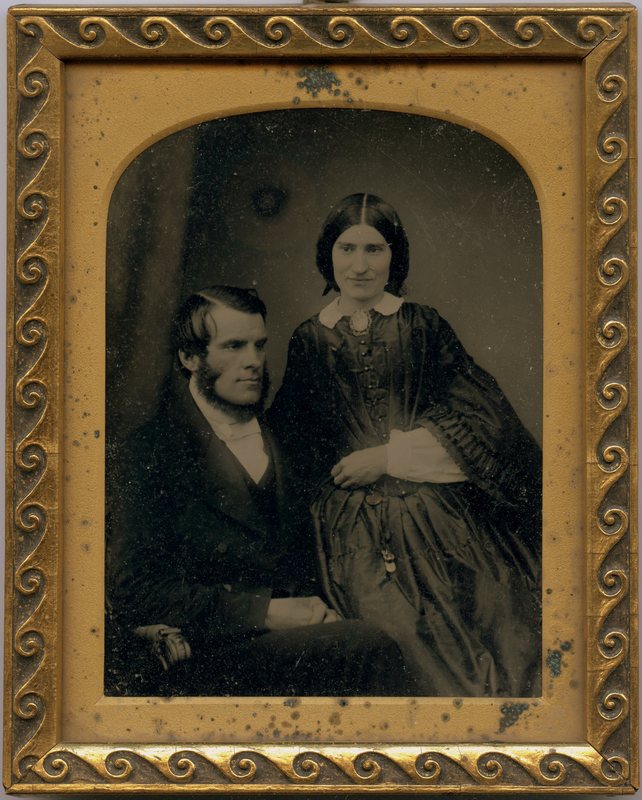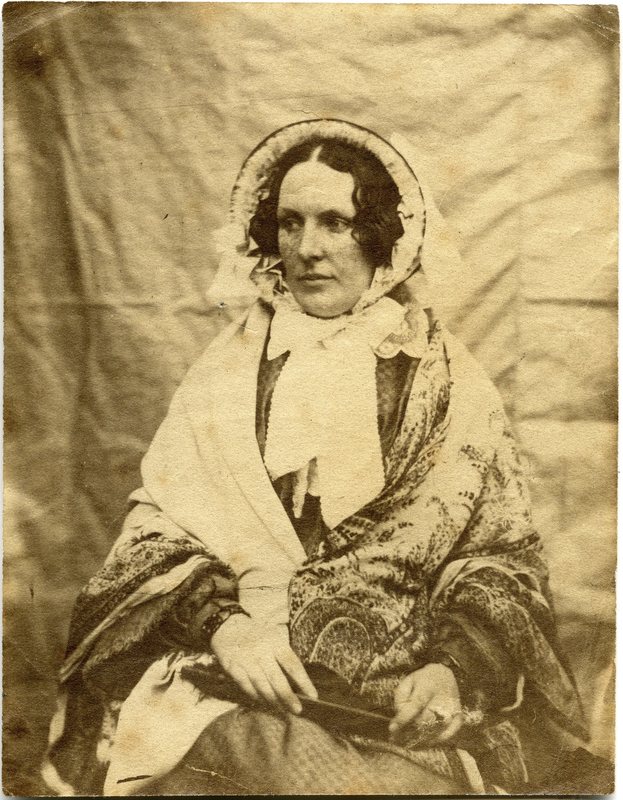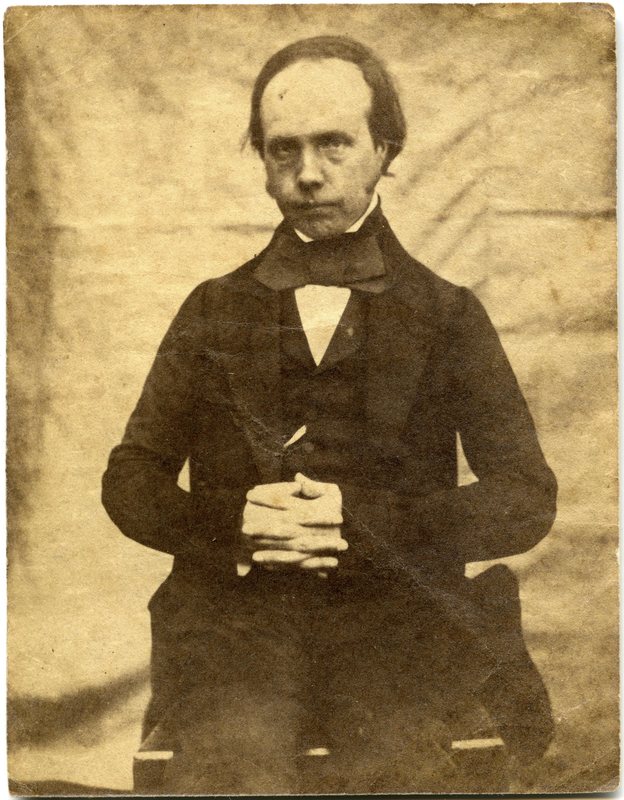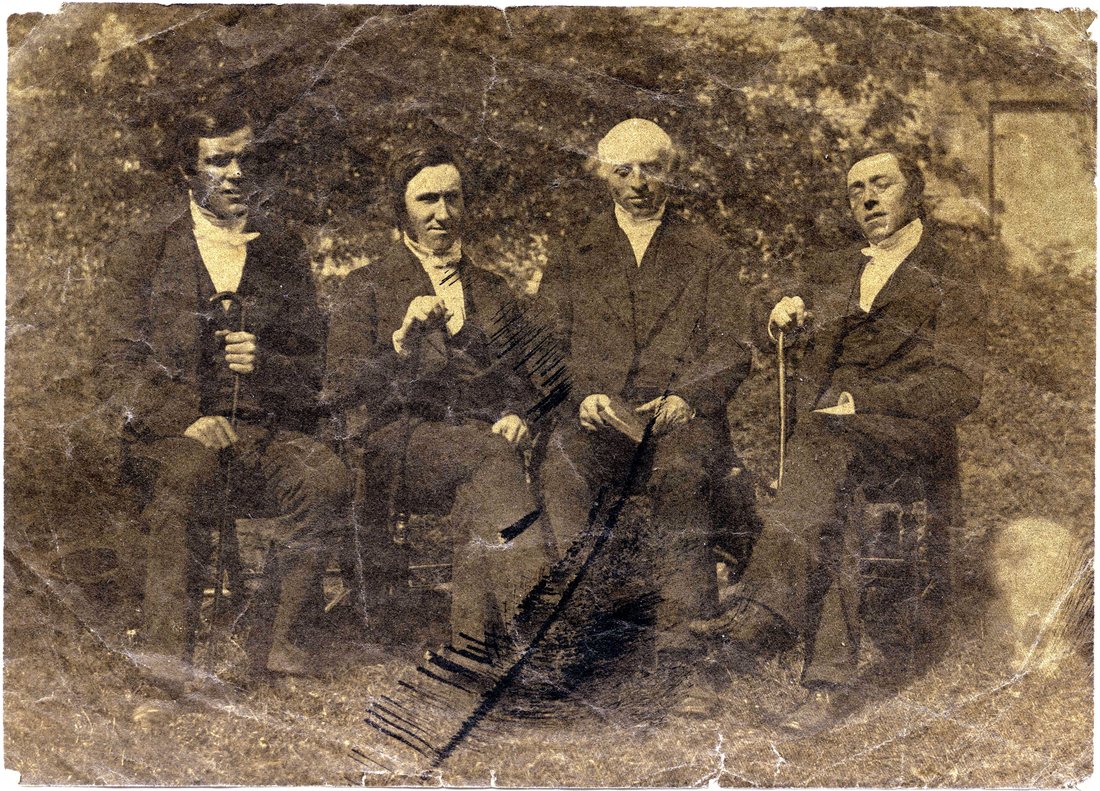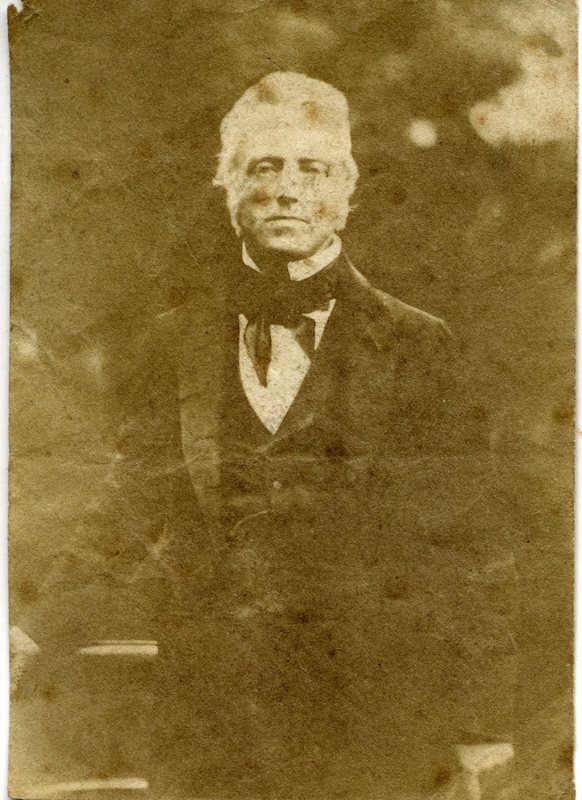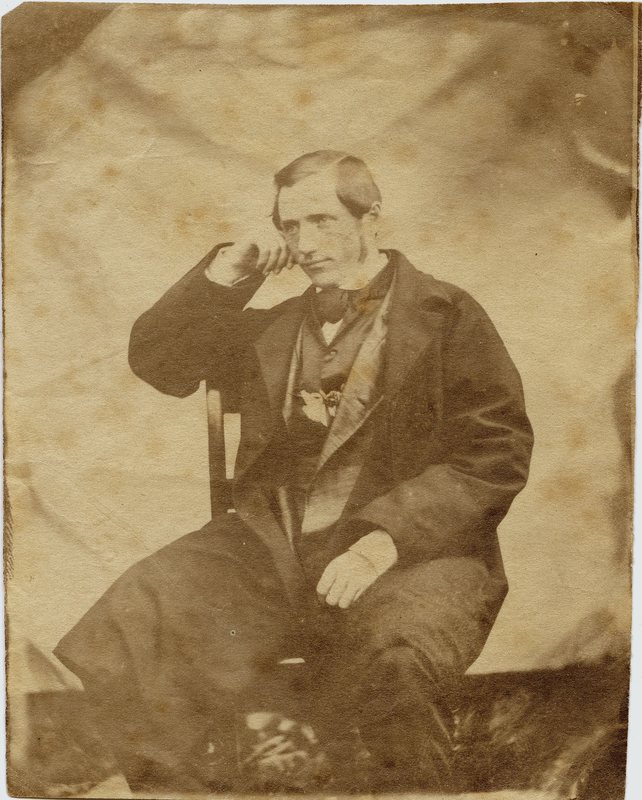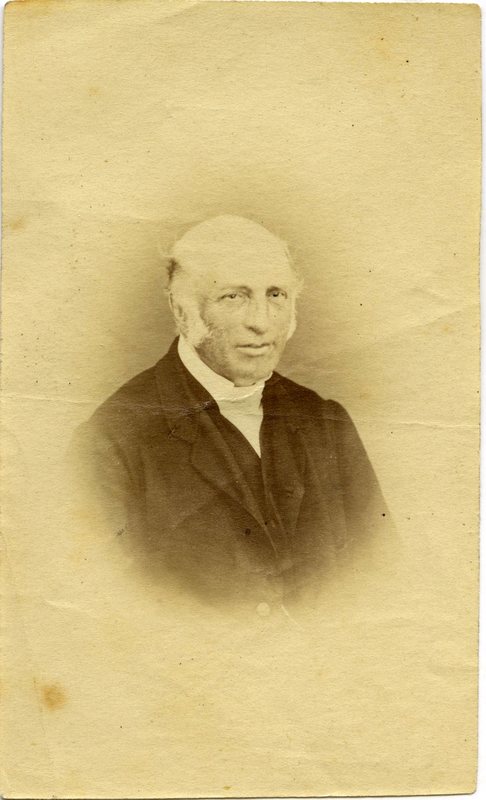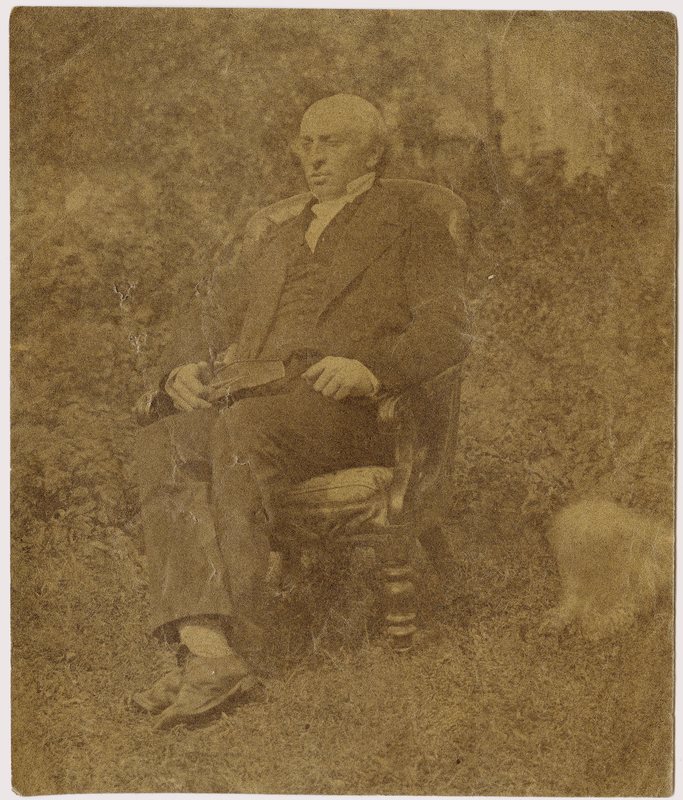Fotografer fra Skotland
David Octavius Hill 1802-1870 & Robert Adamson 1821-1848
Moderna Museet i Malmø 2018: Fotoudstilling som du bør se: Her er det de to skotske fotografer, David Octavius Hill, 1802-1870 og hans makker som døde alt for ung, Robert Adamson 1821-1848. Billederne er fra ca. 1845 (altså blot ca. 5 år efter at teknikken var opfundet og publiceret), taget med Talbots teknik med papirnegativer, talbotypi eller kalotypi, og kopieret på saltpapir. Der er et papirnegativ af en kvinde med på udstillingen og på det ene foto ser man David Octavius Hill, som sidder med en skitseblok ved en grav i Edinburgh. Der er 22 arbejder af disse to fotografer.
David Octavius Hille, 1802-1870 og Robert Adamson 1821-1848. Fire medlemmer af den presbyritanske kirke i Skotland, 29. marts 1845. Saltpapir.
Kilde Moderna Museet Malmø.
Kilde Moderna Museet Malmø.
James Valentine (12 June 1815 – 19 June 1879) Scottish photographer.
|
Photo J. Valentine, Dundee. #384, St. Andrews Church and Tower of St. Regulus. cdv, blank bagside, samling avk.
|
Photo J. Valentine, Dundee. #386, St. Andrews Cathedral. cdv, blank bagside, samling avk.
|
Oplysninger og Valentine og hans firma - sønnerne fortsatte forretningen. HER.
George Washington Wilson, 1823-1893) var en af de første skotske fotografer
Old Town & Bank of Scotland, Edingburgh. 5531. G.W.W. George Washington Wilson (7 February 1823 – 9 March 1893) [1] was a pioneering Scottish photographer.
|
The George Washington Wilson and Co. photographic collection consists of over 37,000 glass plate negatives, produced by the Aberdeen firm between the second half of the nineteenth century and the early twentieth century.
George Washington Wilson (1823-1893), born in the North East of Scotland, went to Edinburgh and then London in the 1840s to train as a portrait miniaturist. He became established in Aberdeen in the 1850s as an artist and photographer, and quickly made a name for himself among the middle classes and landed gentry. His patronage by the Royal Family during their visits to the Balmoral Estates began in 1854 when he was invited to take photographs of the Royal family in the grounds of Balmoral. He received the official appointment of Photographer Royal for Scotland in 1860 and his relationship with the Royal family continued throughout his career. Wilson’s success allowed him to employ staff photographers to carry out the routine portraiture business whilst he travelled the country indulging in his new interest in landscape photography. Wilson won a number of prizes for his photographic works including winning medals at the Great London International Exhibition of 1862 for his experimentation for quick exposures. George Washington Wilson and Co., captured images from all over Britain, recording everything from the natural grandeur of Fingal's Cave on the Isle of Staffa to the bustle of London's Oxford Street. Wilson had a staff of photographers including his son, Charles Wilson, who with senior staff photographer Fred Hardie, toured the colonial townships of South Africa. Dispatched to capture images of Australia in 1892, Hardie also travelled through Queensland, Brisbane, Sydney, Melbourne and Adelaide. These tours provide a vivid picture of gold miners and early settlers at work and play, and of the native or aboriginal way of life. The company invested in sourcing independent photographer to capture the western Mediterranean, where they took images of Gibraltar and the south of Spain, Morocco and Tangiers. |
|
Throughout, Wilson demonstrated technical and commercial acumen, and, by the early 1880s, the company he founded had become the largest and best-known photographic and printing firm in Scotland. Wilson handed the business over to his sons, Charles, Louis and John Wilson in 1888. The company, however, only survived for a short time under the management of Wilson’s sons, with much of the company being sold in 1905 and the company finally ceasing trading in 1908.
KILDE: HER |
The company stock was auctioned off in 1908. The plates passed into the possession of Fred Hardie, and then to the photographer, Archibald J. B. Strachan, who in 1954, offered them to the University Library. The University is pleased to acknowledge the foresight and beneficence of Mr Strachan.
The entire collection of ‘George Washington Wilson and Company’ glass plate negatives is available digitally on our website. Each high resolution image provides a superb level of detail and the collection is fully searchable. Access to the original glass plates is therefore not permitted for conservation reasons. |
Holyrood Palace & Arthur's seat, Edinburgh, 10.080. G.W.W.
James G. Tunny, Edinburgh 1820-1887
Photographer, (signature in corner, left): J.G. Tunny, James G. Tunny, Edinburgh, 1820-1887. Han begyndte sin karriere som fotograf i 1852.
Portræt af Reverend William Masterton and Janet M. born Lumsden. De blev gift 26 Jul 1859 - mon ikke dette er bryllupsbilleder? Det er en ambrotype (eller på dansk vitrotypi). Af samme ægtepars portræt findes en kalotypi, saltpapir, som ganske sikkert er samtidigt, altså fra 1859. Men bemærk, et af billederne er spejlvendt (og heller ikke identiske), det må være vitrotypiet (som jeg ellers troede var retvendt!). OBS! Det er ikke mig, der har spejlvendt et af billederne.
Portræt af Reverend William Masterton and Janet M. born Lumsden. De blev gift 26 Jul 1859 - mon ikke dette er bryllupsbilleder? Det er en ambrotype (eller på dansk vitrotypi). Af samme ægtepars portræt findes en kalotypi, saltpapir, som ganske sikkert er samtidigt, altså fra 1859. Men bemærk, et af billederne er spejlvendt (og heller ikke identiske), det må være vitrotypiet (som jeg ellers troede var retvendt!). OBS! Det er ikke mig, der har spejlvendt et af billederne.
|
James Good Tunny blev professionel fotograf i Edinburgh tidligt i 1850’erne. Han var en af de mange, der blev grebet af entusiasme i 1839 ved Fox Talbots publikationer om den fotografiske opdagelse, kalotypiet. Tunny beundrede Hill og Adamson og kendte Hill personligt i 1850’erne.
Study of James G. Tunny, 1820 1887.
By Julian Bukits (2009): Despite there being much documented facts about James G. Tunny’s life, what little that has been collated relates only to his photographic career. But, beyond the realm of his studio, Tunny’s domestic affairs and political life also make intriguing reading. Married, and widowed three times, Tunny fathered eleven children. His choice of names for three of his offspring clearly indicates his political inclination. He had a reputation for being a staunch radical, aligned to Edinburgh’s Advanced Liberals, committed to bringing about social reforms for the working class. Drawing on research sources such as national archives, contemporary newspaper reports, photographic journals and the Internet, I have pieced together the photographic career of Tunny, setting it in the context of his domestic life, political interests, and the history of early photography. The more facts I uncovered about Tunny, the more intrigued I became about why such a prominent man would have been disregarded so quickly after his death. |
Bobbie Wallace, Aug. 1856. Scotland. ES. Jeg tror Bobbie Wallace var kusk, bemærk seletøjet og de to store børster i vindueskarmen. Contibuted to Tunny?
Ægtepar der blev gift 1859. Lumsden-Masterson-familien, Edinburgh.
Denne lille samling billeder - fra sidst i 1850'erne - har fulgtes ad fra familien Lumsden-Masterton i Skotland til Danmark. De er øjensynligt alle fotograferet i sidste halvdel af 1850'erne. Jeg vover at tilskrive dem alle til fotograf James G. Tunny, 1820 1887 i Edinburgh. Familien synes at have haft rødder i de samme radikale kredse i Skotland. Men - al mulig forbehold. Saltpapir.
